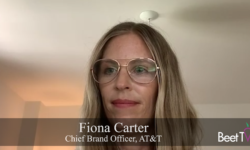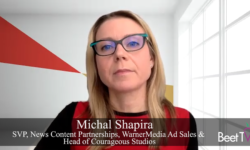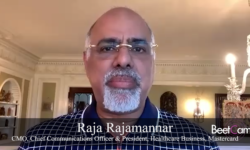The coronavirus is forcing everyone to think creatively. And that includes how marketers find their audiences when the delivery mechanism they expected to use just isn’t available.
Case in point – to find viewers who would otherwise have watched sports events that have been cancelled, some brands are turning to audience targeting, which helps them find the same audiences though they may now be watching other content.
In this video interview with Beet.TV, WarnerMedia SVP of ad innovation and programmatic solutions, Dan Aversano, says explains what is happening.
Finding sports viewers
“We represent a lot of sports properties and we’re not running any of those sports right now,” he says.
“We had a lot of marketing partners who were banking on being able to connect with those fans in those highly engaging environments. So we’ve pivoted and started to leverage a lot of our advanced solutions… whether it was things like audience targeting… so that we could help people find those highly, highly engaged sports fans, but in other forums, in other venues.
“(That is) so we can build segments based on previous viewership of things like the NCAA tournament or NBA games, and now find those consumers for our marketing partners in other areas and in other content or context.”
In other words, WarnerMedia is finding the needle even though there is no haystack.
Key takeaways today from our first ever Xandr-hosted webinar in the US include the importance of building trust by staying relevant with brands/customers now more than ever, to take an Audience-first mindset and approach today, and that day parts are being rewritten. pic.twitter.com/2heRR8d0iG
— Xandr (@xandr) April 28, 2020
Change is good
Sports is one area of content that looks challenged for the foreseeable future, as many competitions wrestle with competing imperatives – the need to resume play, and the likelihood that spectators will either be forbidden from attending or will be reluctant to.
For Aversano, COVID-19 has made clear the need to quickly adapt the changing circumstances.
“This industry is learning a lesson right now about speed and agility that’s really important,” he says.
“The legacy media business has historically not been known for being a massive embracer of change, not been known for being extremely dynamic in how we adapt. I think what you’re seeing right now is a lot of pain in organisations that have not been able to adapt quickly.
“And my hope is that you’re going to see companies who embrace the need for agility and the need to be adaptable in times.”
Audience and context
Over the last year, as new privacy regulation and the looming death of cookies have put the brakes on the high points of advanced audience targeting, we have seen the re-emergence of contextual ad targeting, which seeks to buy ads against particular kinds of topics or emotional responses.
The two – audience and context – are thus being seen by many as operating at two distinct ends of the marketing spectrum.
Indeed, WarnerMedia is showing how brands can substitute the context of sports for the precision of audience targeting.
But Aversano doesn’t think one technique necessarily trumps the other.
“It really shouldn’t be a debate,” he says. “It’s really not ‘one or the other?’ You functionally need both.
“Who you talk to, what you say to them, your creative message, how many times you say it, the content or context with which you say it… these are all important levers that a marketer can pull.
“It’s not any one of them individually that works in isolation. They all actually have to work together.”
WarnerMedia’s COVID-19 response has also included CNN match-funding purpose-driven digital ad buys and committing further TV inventory to public health campaigns, a basketball Twitter talk show from Turner’s involvement in Sports and free content for HBO Go, HBO Now and international channels.
As part of its Tech for Good program, @xandr is partnering with organizations including the @CDCgov and @AdCouncil to educate the public about ways to help combat the spread of the coronavirus. Read more @iab members’ Good Works: https://t.co/WlIZZdKB0C pic.twitter.com/pFVdsm3ejc
— IAB (@iab) April 15, 2020
This video is part of a Beet.TV series titled “Audience, in Context,” presented by Xandr. For more videos please visit this page.











































